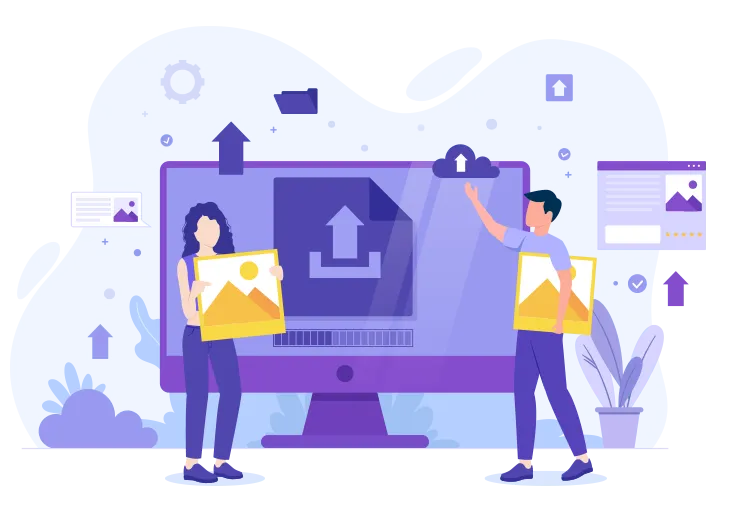
Our JPG to AVIF Conversion Guide
Converting JPG to AVIF is an important step that allows images to be stored in smaller sizes with high quality for websites and digital projects. AVIF is a format that is rapidly becoming popular in the image format world, supporting both lossy and lossless compression. AVIF offers much superior compression compared to JPEG and provides higher quality images with smaller file sizes. In this guide, you can find important information about how to convert from JPG to AVIF, the differences between these two formats, and their advantages.
What Do JPG and AVIF Formats Mean?
JPG Format
JPG (Joint Photographic Experts Group) is a widely used image format with lossy compression features. It's ideal especially for photographs because it successfully compresses colors and details while significantly reducing file sizes. However, this compression process can lead to quality loss and doesn't support features like transparency.
AVIF Format
AVIF (AV1 Image File Format) is a next-generation image format based on AV1 video coding. This format, which offers both lossy and lossless compression options, allows you to store high-quality images with much smaller file sizes. AVIF offers HDR (High Dynamic Range) support, transparency, and greater color depth. It's an ideal solution for those who want fast-loading and high-quality images on websites.
images.tr With the help of the JPG converter on the website, you can easily convert your images in JPG format to AVIF format.
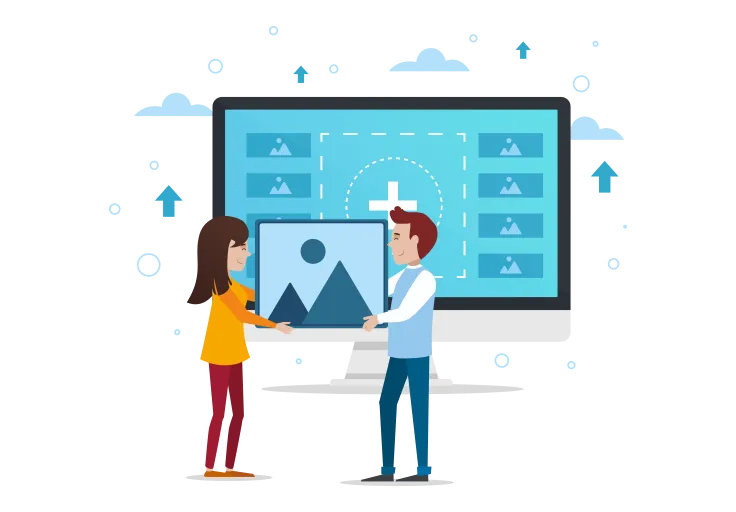
Free, Batch, and Fast JPG to AVIF Conversion with images.tr
The images.tr platform allows you to convert your JPG files to AVIF format for free, quickly, and in batches. This is an excellent option for optimizing images on your website and providing a better user experience. The batch conversion feature allows you to convert many images at once, which helps you save time on large projects. You can significantly reduce file sizes while preserving the quality of your images.
Advantages of images.tr:
- Free and fast conversion: Ability to convert even large image files in seconds.
- Ease of use: Conversions are quick and effortless with a user-friendly interface.
- Batch Conversion: Converting multiple JPG files to AVIF format at the same time.
- High quality, low file size: Preserving image quality while reducing file sizes with the AVIF format.
How to Convert JPG to AVIF with images.tr?
- Upload the JPG files you want to convert using the "Upload" button.
- Select AVIF Format: Choose AVIF as the output format.
- Start the Conversion: Begin the process by clicking the "Convert" button.
- Download the Results: Download the converted AVIF files to your computer.
Batch Image Processing with images.tr: Save Time
The batch image processing feature offered by images.tr provides a significant time saving, especially for those working on large projects. You can convert, resize, and optimize hundreds of images from JPG to AVIF at once.
Advantages of Batch Processing:
Process all your images at once instead of dealing with them individually, and achieve a consistent appearance by applying the same settings to all images, as well as speed up your workflow by automating repetitive tasks.

Everything is very easy with images.tr!
images.tr is an ideal platform for quickly converting your images. By effortlessly converting your JPG files to AVIF format, you can improve both image quality and web performance. With just a few clicks, you can obtain AVIF images with high quality and low file sizes.
What Are the Differences Between JPG and AVIF?
- File Size: AVIF offers much smaller file sizes compared to JPG.
- Image Quality: Despite using lossy compression, AVIF provides better image quality compared to JPG.
- Transparency and HDR Support: AVIF offers transparency and high dynamic range (HDR) support, which JPG doesn't support.
- Color Depth: AVIF provides more color depth, allowing for a richer display of colors and tones.
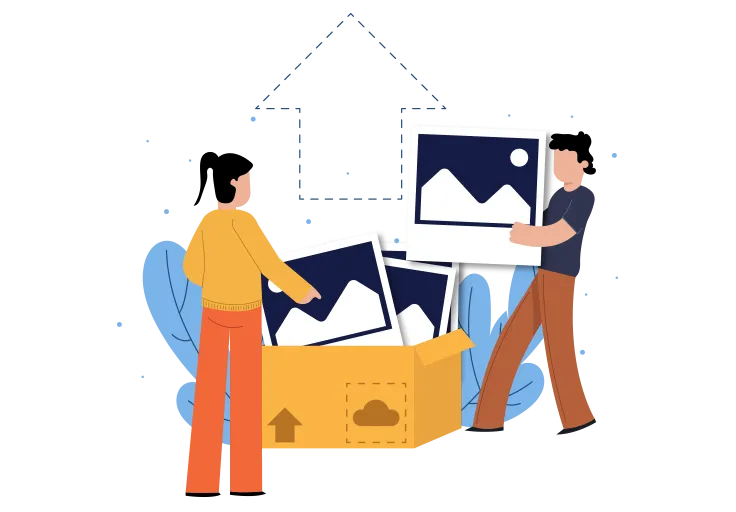

Why Should You Convert from JPG to AVIF?
- Increases Web Speed: Thanks to small file sizes, your website loads faster, which improves both user experience and search engine rankings.
- Preserves Image Quality: AVIF loses image quality at a minimum level during compression, which provides a professional appearance.
- Contributes to SEO: Faster loading pages are rewarded by search engines. Optimizing images increases SEO performance.
- Transparency and Animation Support: These features are often needed in web projects, and the AVIF format offers an advantage in this regard.
Common Usage Areas of JPG and AVIF
- Websites: AVIF is an excellent choice for optimizing images on websites. User satisfaction increases with fast loading times.
- Blogs and Online Stores: Blogs with large image galleries or online stores that offer product images can gain speed and performance advantages by preferring AVIF.
- Graphic Design: AVIF offers a flexible solution in graphic design projects by providing both high quality and low file sizes.
Things to Consider When Converting from JPG to AVIF
- Quality Control: Check the quality of images after conversion. AVIF preserves quality well during compression, but it's important to find the ideal settings for each project.
- Browser and Platform Support: AVIF format is supported by modern browsers, but some older browsers may not yet offer AVIF support.
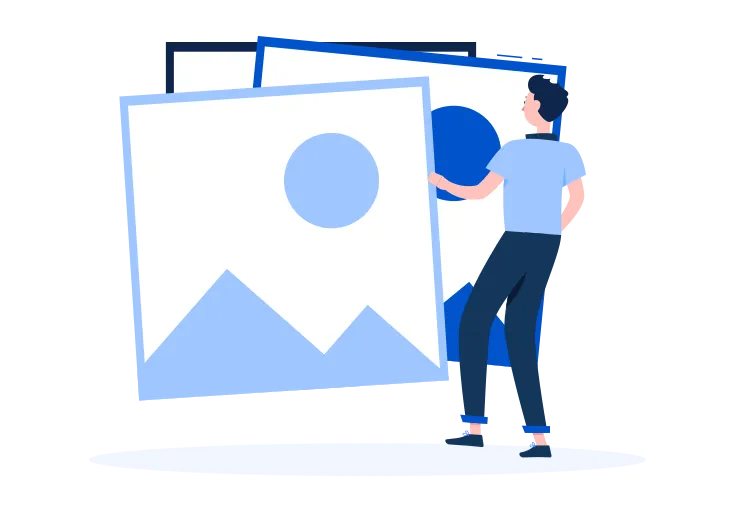
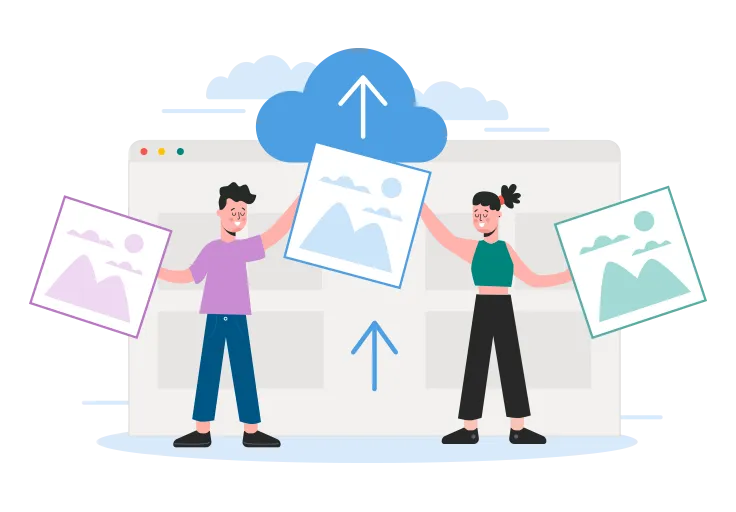
Image Resizing: An Important Step After AVIF Conversion
Using the AVIF images you've converted in the right sizes on your website or project increases performance. Reducing large file sizes should not be limited to conversion only; using images in appropriate resolution is also important.
Why is Image Resizing Important?
- Page Loading Speed: Small-sized images ensure your page loads faster.
- Mobile Compatibility: Resized images perform better on mobile devices.
- SEO Advantage: Fast-loading pages rank higher in search engines.
- User Experience: Fast-loading images increase the time your visitors spend on the site.
Impact of JPG to AVIF Conversion on SEO
The AVIF format provides great advantages for SEO. Smaller file sizes help you achieve better rankings in search engines by increasing page loading speed. Additionally, AVIF contributes to your SEO performance as it's compatible with Google's algorithms. Fast-loading images increase user satisfaction, which indirectly improves your SEO performance.
Benefits of Using AVIF for SEO:
- Visual Search Optimization: High-quality AVIF images can achieve better rankings in visual searches.
- On-Page SEO: Clear and readable images improve user experience and increase time spent on the site.
- Fast Loading: Properly sized AVIF files increase your page loading speed, positively affecting your SEO.

Take Your Images to the Next Level with JPG to AVIF
If you want to store your images in high quality and low sizes, you can take your images to the next level with JPG to AVIF conversion. Faster loading web pages and optimized images improve your site's performance and user experience.
Frequently asked questions about JPG
What is JPG compression?
JPG compression is a process that reduces file size while preserving image quality. This provides faster loading times and storage savings.
Which formats can I convert JPG files to?
You can convert JPG files to formats like PNG, WEBP, AVIF, and HEIC. Each format has its own unique advantages.
How is the quality of JPG files affected?
Since JPG compression is a lossy format, image quality may decrease as compression ratio increases. Lower compression provides better quality.
Why is resizing a JPG file important?
Image resizing improves web page loading speed and enhances user experience. It also allows for sharing in appropriate sizes on social media.
Why are JPG files more common?
The JPG format is popular among photographers and web designers due to its high compression ratio and good quality balance.
Does JPG compression cause data loss?
Yes, JPG compression is lossy; this means you lose some image data as you reduce file size.
What are the advantages of converting JPG to PNG?
PNG format provides lossless compression and supports transparency. This is ideal especially for graphic and logo designs.
How can I convert a JPG file to HEIC format?
You can use online converter tools or software to convert your JPG file to HEIC format. HEIC provides better compression.
What are the benefits of switching from JPG to WEBP?
WEBP offers better compression ratios and generally provides smaller file sizes with faster loading times compared to JPG.
How can I optimize JPG files?
You can optimize JPG files by using appropriate compression settings, removing unnecessary metadata, and applying proper resizing to reduce file size.
What are the differences between JPG and other formats?
JPG offers lossy compression, PNG is lossless, WEBP provides better compression and transparency, AVIF offers high quality with low file size, and HEIC is a modern format providing more efficient storage on mobile devices.
What is the impact of JPG files on SEO?
Optimized JPG files improve web page loading speed, which positively affects SEO.
How can I improve the visibility of JPG format images in search engine results?
You can make your JPG images more visible by using image alt tags correctly, setting descriptive file names, and applying proper resizing.
Frequently asked questions about AVIF
What is AVIF?
AVIF is a modern image format that offers high-quality images with smaller file sizes. It supports both lossy and lossless compression.
What are the advantages of AVIF format?
AVIF provides better compression ratios and higher image quality, making it ideal for websites.
Which formats can I convert AVIF files to?
You can convert AVIF files to formats like JPG, PNG, WEBP, and HEIC.
What browsers support AVIF?
Chrome, Firefox, and many Chromium-based browsers support AVIF. Some browsers may require updates or additional plugins for compatibility.
What is the compression ratio of AVIF format?
AVIF can achieve 30-50% better compression compared to JPEG and 20-30% better than WEBP for similar image quality.
How does AVIF affect website performance?
AVIF improves website performance by reducing load times with smaller file sizes while maintaining high quality, resulting in better user experience.
Does AVIF support transparency?
Yes, AVIF supports alpha channel transparency, similar to PNG but with more efficient compression.
How is AVIF different from WEBP?
AVIF generally offers better compression and quality than WEBP, but WEBP currently has better browser support. AVIF is newer and still gaining widespread adoption.
Can I convert JPG to AVIF?
Yes, you can convert JPG to AVIF using various online tools or software, resulting in smaller file sizes with similar quality.
What are the limitations of AVIF?
Limited browser support is the main limitation of AVIF. Additionally, encoding AVIF images can be more processor-intensive than other formats.
Is AVIF supported on mobile devices?
AVIF is supported on newer mobile devices, especially those with Chrome or Android browsers, but support varies by device and operating system.
How can I optimize AVIF files?
You can optimize AVIF files by adjusting compression settings, choosing appropriate quality levels, and using specialized optimization tools.
Published on .